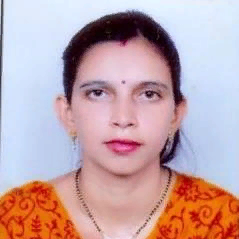International Journal of Image, Graphics and Signal Processing (IJIGSP)
IJIGSP Vol. 6, No. 12, 8 Nov. 2014
Cover page and Table of Contents: PDF (size: 567KB)
A Comparative Study of Wavelet Thresholding for Image Denoising
Full Text (PDF, 567KB), PP.39-46
Views: 0 Downloads: 0
Author(s)
Index Terms
Image Denoising, Wavelet Transform, Wavelet Shrinkage, Wavelet Thresholding, Gaussian Noise Reduction
Abstract
Image denoising using wavelet transform has been successful as wavelet transform generates a large number of small coefficients and a small number of large coefficients. Basic denoising algorithm that using the wavelet transform consists of three steps – first computing the wavelet transform of the noisy image, thresholding is performed on the detail coefficients in order to remove noise and finally inverse wavelet transform of the modified coefficients is taken. This paper reviews the state of art methods of image denoising using wavelet thresholding. An Experimental analysis of wavelet based methods Visu Shrink, Sure Shrink, Bayes Shrink, Prob Shrink, Block Shrink and Neigh Shrink Sure is performed. These wavelet based methods are also compared with spatial domain methods like median filter and wiener filter. Results are evaluated on the basis of Peak Signal to Noise Ratio and visual quality of images. In the experiment, wavelet based methods perform better than spatial domain methods. In wavelet domain, recent methods like prob shrink, block shrink and neigh shrink sure performed better as compared to other wavelet based methods.
Cite This Paper
Arun Dixit, Poonam Sharma,"A Comparative Study of Wavelet Thresholding for Image Denoising", IJIGSP, vol.6, no.12, pp.39-46, 2014. DOI: 10.5815/ijigsp.2014.12.06
Reference
[1]R. C. Gonzalez, R. E. Woods, Digital Image Processing, second ed., Prentice-Hall, Inc., 2002.
[2]D. L. Donoho and I. M. Johnstone, “Adatpting to unknow smoothness via wavelet shrinkage,” Journal of the American Statistical Association, vol. 90, no. 432, pp. 1200-1224, December 1995. doi:10.1.1.161.8697.
[3]D. L. Donoho, I. M. Johnstone, “Ideal spatial adaptation by wavelet shrinkage,” Biometrika, vol. 81, no. 3, pp. 425–455, 1994. doi:10.1093/biomet/81.3.425.
[4]M. K. Mihcak, I. Kozintsev, K. Ramchandran, P. Moulin, “Low-complexity image denoising based on statistical modeling of wavelet coefficients,” IEEE Signal processing, vol. 6, pp. 300-303, 1999. doi:10.1109/97.803428.
[5]S. G. Chang, B. Yu, and M. Vetterli, “Adaptive wavelet thresholding for image denoising and compression,” IEEE Transaction Image Processing, vol. 9, pp. 1532-1546, 2000. doi:10.1109/83.862633.
[6]E. R. McVeigh, R. M. Henkelman and M. J. Bronskill, “Noise and Filtration in Magnetic Resonance Imaging,” Med. Phys., vol. 12, No. 5, pp. 586-591, 1985.
[7]H. Gao, “Wavelet shrinkage denoising using the nonnegative garrote,” J. computer Graph. vol. 7, pp. 469–488, 1998. doi:10.1.1.48.8935.
[8]D. L. Donoho, “De-noising by soft thresholding,” IEEE Trans. on Information Theory, vol.41, no. 3, pp. 613-627, 1995. doi:10.1109/18.382009.
[9]M. Nasri, Hossein Nezamabadi-pour, “Image denoising in the wavelet domain using a new adaptive thresholding function,” Elsevier Neurocomputing, vol. 72, pp. 1012– 1025, 2009. doi:10.1016/j.neucom.2008.04.0160.
[10]F. Xiao, Yungang Zhang, “A Comparative Study on Thresholding Methods in Wavelet-based Image Denoising,” Elsevier Advanced in Control Engineering and Information Science, vol. 15, pp. 3998 – 4003, 2011. doi:10.1016/j.proeng.2011.08.749.
[11]A. Pizurica, W. Philips,. “Estimating probability of presence of a signal of interest in multiresolution single and multiband image denoising” .IEEE Trans.Image Process., 654–665, 2006 doi:10.1109/TIP.2005.863698.
[12]G. Y. Chen, T. D. Bui, A. Krzyzak, “Image denoising with neighbour dependency and customized wavelet and threshold,” Pattern Recognition, 38, pp. 115–124, 2005. doi:10.1016/j.patcog.2004.05.009.
[13]Zhou Dengwen and Shen Xiaoliu, “Image Denoising Using Block Thresholding,” IEEE Congress on Image and Signal Processing, pp. 335-338, 2008. doi: 10.1109/CISP.2008.131.
[14]Zhou Dengwen and Cheng Wengang,” Image denoising with an optimal threshold and neighbouring window,” Elsevier pattern Recognition, Vol. 29, no. 11, pp. 1694–169, 2008 doi:10.1016/j.patrec.2008.04.014.
[15]S. G. Mallet, “A Theory for Multiresolution Signal Decomposition: The Wavelet Representation,” IEEE Transaction on pattern recognition and machine intelligence, vol. 11, No. 7, 1989. doi:10.1109/34.192463.
[16]A. G. Bruce, H. Gao, “Understanding WaveShrink: Variance and bias estimation,” Biometrika, vol. 83, pp. 727-745, 1996 doi:10.1.1.135.913.
[17]Mohamed Ali HAMDI, “A Comparative Study in Wavelets, Curvelets and Contourlets as Denoising Biomedical Images,” I.J. Image, Graphics and Signal Processing, MECS, pp. 44-50, 2012. doi:10.5815/ijigsp.2012.01.06.
[18]Devanand Bhonsle, Vivek Chandra, G. R. Sinha, “Medical Image Denoising Using Bilateral Filter,” I.J. Image, Graphics and Signal Processing, MECS, vol. 4, no. 6, pp. 36-43, 2012. doi:10.5815/ijigsp.2012.06.06.

